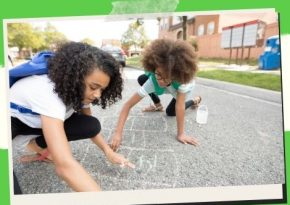
The Future of K12 Education: Insights for Educators
Discover essential tips and strategies for enhancing K12 education as an educator.
Guide to K-12 Education for Educators 
Educators play a crucial role in shaping the minds of the future. In the K-12 educational system, which encompasses kindergarten through 12th grade, educators are responsible for not only imparting academic knowledge but also fostering social and emotional development. This comprehensive guide aims to provide educators with essential information, practical tips, and valuable resources to enhance their effectiveness in the classroom. Whether you’re a seasoned teacher or just starting your career, these insights can help you navigate the dynamic world of K-12 education.
Understanding the K-12 Education System
K-12 education is divided into three main stages:
- Elementary School (K-5): Focuses on foundational skills in reading, writing, math, science, and social studies, along with social and emotional learning.
- Middle School (6-8): Introduces more complex subjects, encourages critical thinking, and supports the transition from childhood to adolescence.
- High School (9-12): Prepares students for college, careers, and adulthood through advanced coursework, electives, and extracurricular activities.
Essential Roles of Educators
Educators in the K-12 system wear many hats. Here are some of the key roles they play:
- Instructor: Delivering lessons and ensuring students grasp essential concepts.
- Mentor: Guiding students through academic and personal challenges.
- Facilitator: Encouraging active learning and critical thinking.
- Role Model: Demonstrating positive behavior and attitudes.
- Advocate: Supporting students’ needs and interests.
Creating an Effective Learning Environment
A conducive learning environment is crucial for student success. Here are some tips to create an engaging and supportive classroom:
- Classroom Setup
- Seating Arrangements: Arrange desks to encourage interaction and collaboration.
- Decor: Use vibrant and educational posters, student work displays, and plants to create an inviting atmosphere.
- Organization: Keep materials and resources well-organized to reduce clutter and distractions.
- Establishing Rules and Routines
- Clear Expectations: Set and communicate clear expectations for behavior and academic performance.
- Consistent Routines: Establish routines for daily activities to provide structure and predictability.
- Positive Reinforcement: Use positive reinforcement to encourage good behavior and academic effort.
- Building Relationships
- Get to Know Your Students: Learn about your students’ interests, strengths, and challenges.
- Open Communication: Foster open lines of communication with students and their families.
- Empathy and Respect: Show empathy and respect to create a trusting and supportive classroom environment.
Instructional Strategies for Effective Teaching
Effective teaching requires a variety of instructional strategies to meet the diverse needs of students. Here are some proven methods:
- Differentiated Instruction
- Tailored Lessons: Adapt lessons to accommodate different learning styles and abilities.
- Flexible Grouping: Use small groups or individual instruction to address specific needs.
- Varied Resources: Provide a range of materials and resources to support diverse learners.
- Active Learning
- Hands-On Activities: Incorporate hands-on activities and experiments to engage students.
- Discussion and Debate: Encourage discussion and debate to develop critical thinking skills.
- Interactive Technology: Utilize technology tools and apps to make learning interactive and fun.
- Assessment for Learning
- Formative Assessment: Use formative assessments to monitor student progress and adjust instruction as needed.
- Summative Assessment: Administer summative assessments to evaluate overall student learning.
- Feedback: Provide timely and constructive feedback to help students improve.
Integrating Technology in the Classroom
Technology can enhance teaching and learning in numerous ways. Here are some tips for integrating technology effectively:
- Educational Apps and Software
- Learning Management Systems (LMS): Use LMS platforms like Google Classroom or Canvas to organize and deliver content.
- Interactive Tools: Incorporate interactive tools like Kahoot, Quizlet, and Nearpod to make learning engaging.
- Subject-Specific Apps: Use subject-specific apps to reinforce concepts and skills.
- Blended Learning
- Online Resources: Supplement traditional instruction with online resources, such as videos, articles, and simulations.
- Flipped Classroom: Implement a flipped classroom model, where students watch instructional videos at home and engage in hands-on activities in class.
- Digital Collaboration: Use digital collaboration tools like Google Docs, Padlet, and Trello to facilitate group projects and discussions.
- Digital Literacy
- Internet Safety: Teach students about internet safety and responsible online behavior.
- Research Skills: Develop students’ research skills by guiding them in finding and evaluating online information.
- Technology Etiquette: Encourage proper technology etiquette, such as respectful communication and proper citation of sources.
Supporting Diverse Learners
K-12 classrooms are diverse, with students from various backgrounds and abilities. Here are strategies to support all learners:
- Special Education
- Individualized Education Plans (IEPs): Develop and implement IEPs for students with special needs.
- Inclusive Practices: Use inclusive practices to ensure all students feel valued and supported.
- Collaboration: Work with special education professionals, parents, and students to create an effective support plan.
- English Language Learners (ELLs)
- Language Support: Provide language support through bilingual resources, visual aids, and simplified instructions.
- Cultural Sensitivity: Be culturally sensitive and respectful of students’ backgrounds.
- Language Development: Incorporate language development activities to help ELLs improve their proficiency.
- Gifted and Talented Students
- Advanced Coursework: Offer advanced coursework and enrichment activities to challenge gifted students.
- Independent Projects: Encourage independent projects that allow gifted students to explore their interests.
- Mentorship: Provide mentorship opportunities to support the growth and development of gifted students.
Professional Development for Educators
Continuous professional development is essential for educators to stay current with best practices and new educational trends. Here are some ways to pursue professional growth:
- Workshops and Conferences
- Attend Workshops: Participate in workshops and seminars to learn new teaching strategies and techniques.
- Educational Conferences: Attend educational conferences to network with other educators and gain insights from experts.
- Online Courses and Webinars
- MOOCs: Enroll in Massive Open Online Courses (MOOCs) to expand your knowledge and skills.
- Webinars: Join webinars on various educational topics to stay informed about the latest trends and research.
- Professional Learning Communities (PLCs)
- Collaborate with Colleagues: Join or form PLCs with colleagues to share ideas, resources, and best practices.
- Peer Observations: Participate in peer observations to receive feedback and learn from each other.
- Self-Reflection
- Reflective Journals: Keep a reflective journal to document your teaching experiences and identify areas for improvement.
- Self-Assessment: Regularly assess your teaching practices and set goals for professional growth.
Building a Strong School Community
A strong school community is essential for student success. Here are some tips to foster a positive and inclusive school environment:
- Parent and Family Engagement
- Communication: Maintain regular communication with parents and families through newsletters, emails, and parent-teacher conferences.
- Involvement: Encourage parent and family involvement in school activities and events.
- Partnerships: Build partnerships with families to support student learning and well-being.
- Collaboration with Colleagues
- Team Teaching: Collaborate with colleagues on team teaching and interdisciplinary projects.
- Resource Sharing: Share resources and materials with colleagues to enhance teaching and learning.
- Supportive Culture: Foster a supportive and collaborative school culture that values teamwork and mutual respect.
- Community Connections
- Local Partnerships: Build partnerships with local businesses, organizations, and community leaders to support school initiatives.
- Service Learning: Incorporate service learning projects that connect students with the community and promote civic engagement.
- Community Events: Host community events and open houses to engage the wider community and showcase student achievements.
Benefits of K-12 Education for Educators
- Personal Fulfillment: Teaching provides a deep sense of fulfillment as educators witness their students’ growth and success.
- Community Impact: Educators have the power to positively influence their communities by nurturing future leaders.
- Continuous Learning: The field of education encourages lifelong learning and professional development.
- Job Stability: Teaching offers a stable and secure career with numerous opportunities for advancement.
- Work-Life Balance: Many teaching positions offer favorable work-life balance, including summers off and holiday breaks.
- Diverse Career Paths: Educators can pursue various roles, from classroom teaching to administration and curriculum development.
- Creativity in Teaching: Educators can use innovative methods and creative approaches to engage students.
- Networking Opportunities: Teachers have access to a vast network of professionals for collaboration and support.
- Influence and Leadership: Educators often become leaders in their schools and communities, advocating for educational improvements.
- Rewarding Relationships: Building lasting relationships with students, parents, and colleagues is one of the most rewarding aspects of teaching.
Case Studies
- Mrs. Thompson, Elementary School Teacher: Mrs. Thompson implemented a project-based learning approach in her 4th-grade classroom, leading to higher student engagement and improved test scores. Her innovative methods were adopted by the entire school district.
- Mr. Garcia, High School Science Teacher: Mr. Garcia created a flipped classroom model, allowing students to learn new content at home and engage in hands-on experiments in class. This approach resulted in a significant increase in students’ interest and performance in science.
- Ms. Lee, Middle School Principal: Ms. Lee introduced a comprehensive anti-bullying program that reduced incidents of bullying by 50%. Her leadership and dedication fostered a safer and more inclusive school environment.
- Dr. Patel, Curriculum Developer: Dr. Patel designed an interdisciplinary curriculum that integrated STEM education with the arts. This curriculum enhanced students’ critical thinking and creativity, preparing them for diverse career paths.
- Ms. Johnson, Special Education Teacher: Ms. Johnson developed individualized education plans (IEPs) that tailored learning experiences to each student’s needs. Her work led to improved academic outcomes and increased confidence among her students.
- Mr. Robinson, School Counselor: Mr. Robinson implemented a mental health awareness program that provided students with resources and support. This program significantly reduced stress and anxiety levels among students.
- Mrs. Hernandez, Reading Specialist: Mrs. Hernandez introduced a literacy initiative that incorporated technology and interactive reading tools. Her program boosted reading comprehension and fostered a love for reading in her students.
- Mr. Wong, Technology Coordinator: Mr. Wong spearheaded the integration of digital tools in classrooms, enhancing both teaching and learning experiences. His efforts prepared students for the technological demands of the future.
- Ms. Adams, Art Teacher: Ms. Adams established a community art project that involved students, parents, and local artists. This project not only beautified the school but also strengthened community bonds and showcased students’ talents.
- Mr. Smith, Physical Education Teacher: Mr. Smith developed a fitness program that encouraged students to adopt healthy lifestyles. His initiative improved students’ physical health and academic performance.
Key Takeaways
- Student-Centered Learning: Focus on creating learning environments that prioritize student needs and interests.
- Innovative Teaching Methods: Embrace new teaching strategies to engage and inspire students.
- Professional Development: Continuously seek opportunities for growth and learning to stay current in the field.
- Collaboration and Support: Build strong networks with colleagues for shared resources and ideas.
- Community Involvement: Engage with the community to enhance the educational experience and foster support.
- Adaptability: Be flexible and open to change to meet the evolving needs of students and education.
- Emotional Intelligence: Develop strong interpersonal skills to effectively support and connect with students.
- Technology Integration: Utilize technology to enhance teaching and prepare students for a digital world.
- Advocacy and Leadership: Advocate for positive changes in education and take on leadership roles when possible.
- Passion and Dedication: Maintain a passion for teaching and a commitment to making a difference in students’ lives.
FAQs and Answers
- Q: How can I become a more effective teacher?
A: Continuously seek professional development, stay updated on educational trends, and engage with your students to understand their needs. - Q: What are some effective ways to manage a classroom?
A: Establish clear expectations, build positive relationships with students, and use consistent routines and consequences. - Q: How can I integrate technology into my teaching?
A: Use digital tools and resources to enhance lessons, encourage student collaboration, and provide interactive learning experiences. - Q: What are the benefits of project-based learning?
A: Project-based learning increases student engagement, fosters critical thinking, and helps students apply knowledge in real-world contexts. - Q: How can I support students with diverse learning needs?
A: Differentiate instruction, use inclusive teaching strategies, and create individualized education plans (IEPs) when necessary. - Q: What are some strategies for promoting student mental health?
A: Implement mental health awareness programs, provide resources and support, and create a safe and inclusive school environment. - Q: How can I foster a love for reading in my students?
A: Use interactive and engaging reading tools, provide a variety of reading materials, and create a positive reading culture in the classroom. - Q: What role does parent involvement play in education?
A: Parent involvement enhances student achievement, improves behavior, and fosters a supportive learning environment. - Q: How can I develop as a leader in education?
A: Take on leadership roles, seek mentorship, and advocate for positive changes in your school and community. - Q: What are the key qualities of a successful educator?
A: Passion, dedication, adaptability, strong communication skills, and a commitment to student success.
Conclusion
Educators have the power to make a lasting impact on the lives of their students. By creating an effective learning environment, employing diverse instructional strategies, integrating technology, supporting diverse learners, pursuing professional development, and building a strong school community, educators can enhance their effectiveness and foster student success.
Remember, teaching is a journey of continuous learning and growth. Embrace the challenges and opportunities that come your way, and strive to inspire and empower your students every day. Together, we can create a brighter future for all.
Key Phrases
- Enhancing K12 education
- K12 education strategies
- Tips for K12 educators
- Modern K12 education
- Innovative teaching approaches
- Effective K12 teaching
- K12 education trends
- Educator tools and techniques
- Future of K12 education
- Best practices for teachers
Best Hashtags
- #K12Education
- #EducatorTips
- #TeachingStrategies
- #ModernEducation
- #InnovativeTeaching
- #EffectiveTeaching
- #EducationTrends
- #EducatorTools
- #FutureEducation
- #BestPractices
Save/Share this story with QR CODE
Disclaimer
This article is for informational purposes only and does not constitute endorsement of any specific technologies or methodologies and financial advice or endorsement of any specific products or services.
 Need to get in touch?
Need to get in touch?

We appreciate your reading. 
1.) 

Your DONATION will be used to fund and maintain NEXTGENDAY.com
Subscribers in the Philippines can make donations to mobile number 0917 906 3081, thru GCash.
3.) 
4.) 
AFFILIATE PARTNERS

World Class Nutritional Supplements - Buy Highest Quality Products, Purest Most Healthy Ingredients, Direct to your Door! Up to 90% OFF.
Join LiveGood Today - A company created to satisfy the world's most demanding leaders and entrepreneurs, with the best compensation plan today.

 Business, Finance & Technology
Business, Finance & Technology























